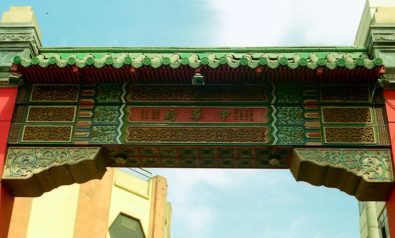
On Latin America and the Middle Kingdom.
Background
China has come to Latin America seeking oil, minerals, metals, and food – the natural resources needed to sustain an emerging superpower.
In 2011, China’s trade with Latin America reached $241.5bn. Over the next five years, Premier Wen Jiabao envisions expanding the current volume to $400bn. His dreams are not farfetched. Back in 2009, total trade with Latin America stood at just over $100bn. In 2000, it was a mere $10bn.
From 2000 to 2011, China’s six-fold expansion in Purchasing Power fueled a 2400% increase in trade with Latin America. Over the same period, Latin America’s GDP more than doubled to nearly $5tn.
As of 2011, China had become the largest export destination for Brazil, Chile, and Peru and the second largest for Argentina, Costa Rica and Cuba.

How is China’s presence in Latin America Relevant?
China means money and growth, but encourages questionable practices
China has brought cheaper imports, a more diverse clientel of trading partners and a significant amount of extra capital. However, many lament the practices of Chinese state corporations for buying up land, paying below industry wages and deepening Latin America’s dependence on the export of natural resources.
From a practical perspective, China seems like a great deal. Chinese lenders are much more lenient in their standards, providing Latin American states with the immediate captial necessary to develop their infrastructure. In 2010 alone, China granted Latin American countries $37bn in low interest loans as a form of economic assistence – outnumbering contributions from the World Bank, the Inter-American Development Bank, and the US Import-Export Bank combined. In exchange for resource consesions from Latin America, the Chinese have financed new highways, raillines, and irrigation systems in these countries.
However, these loans are extremely concetrated in a handful of countries and sectors. More than 90% went to Venezuela, Brazil, Argentina and Ecuador, and most were invested in improvements in mining and transportation infrastructure. Likewise, 90% of all foreign direct investment (FDI) was directed toward the extractive industries. Essentially, China has mastered the use of aid and investment to faciliatate resource exploitation, requiring exclusive access to certain resources in exchange for loan interest loans.
Diplomatically, China has been less concerned with undermining the influence of the United States in Latin America and more focused on gaining recognition as the true China, in its ongoing rivalry with Taiwan.
As He Li, a scholar on Sino-Latin American relations pointed out, “Beijing is determined to contain Taiwan in every corner of the world, especially in Central America and the Caribbean, the stronghold of Taiwan.” Indeed, twelve of the twenty-three countries that still recognize Taiwan as the legitimate government of China are located in Central America and the Caribbean.
For more than 10 years, Fair Observer has been free, fair and independent. No billionaire owns us, no advertisers control us. We are a reader-supported nonprofit. Unlike many other publications, we keep our content free for readers regardless of where they live or whether they can afford to pay. We have no paywalls and no ads.
In the post-truth era of fake news, echo chambers and filter bubbles, we publish a plurality of perspectives from around the world. Anyone can publish with us, but everyone goes through a rigorous editorial process. So, you get fact-checked, well-reasoned content instead of noise.
We publish 2,500+ voices from 90+ countries. We also conduct education and training programs on subjects ranging from digital media and journalism to writing and critical thinking. This doesn’t come cheap. Servers, editors, trainers and web developers cost money.
Please consider supporting us on a regular basis as a recurring donor or a sustaining member.
Support Fair Observer
We rely on your support for our independence, diversity and quality.
Will you support FO’s journalism?
We rely on your support for our independence, diversity and quality.





